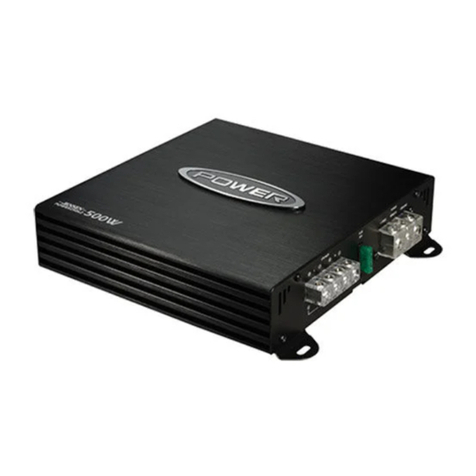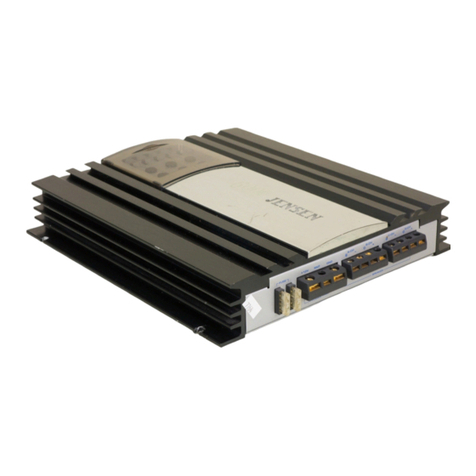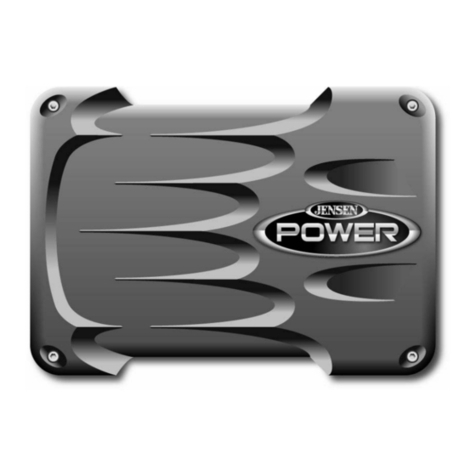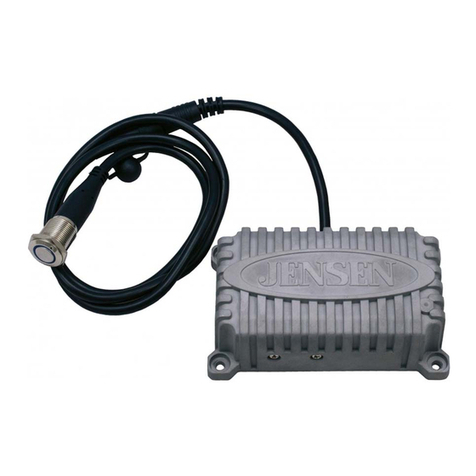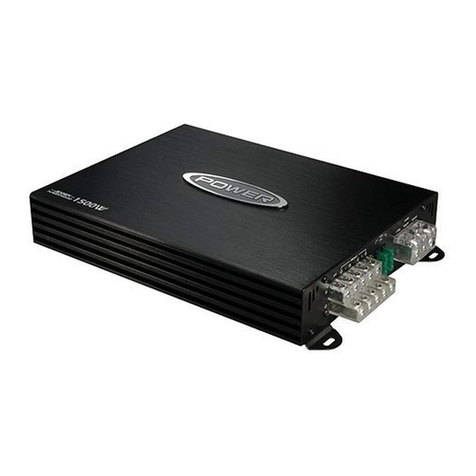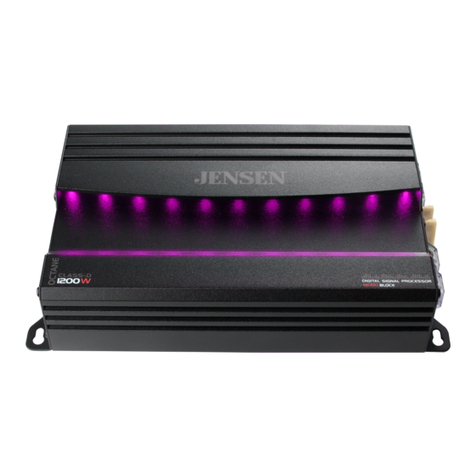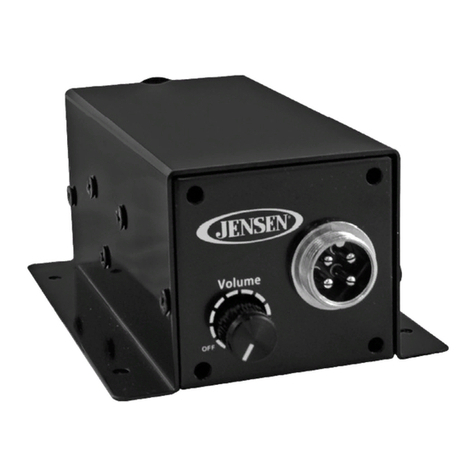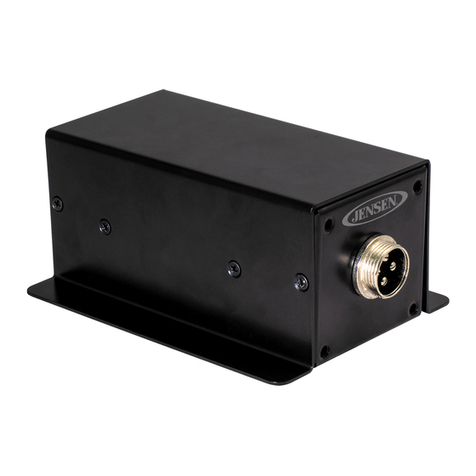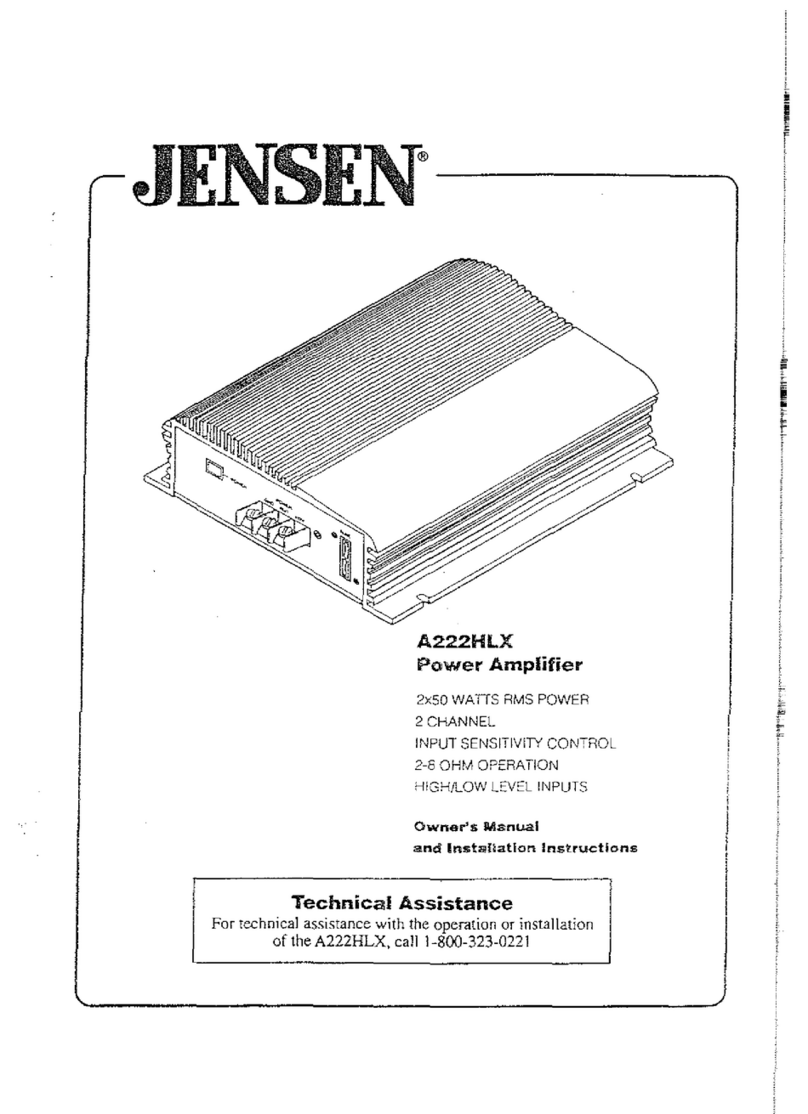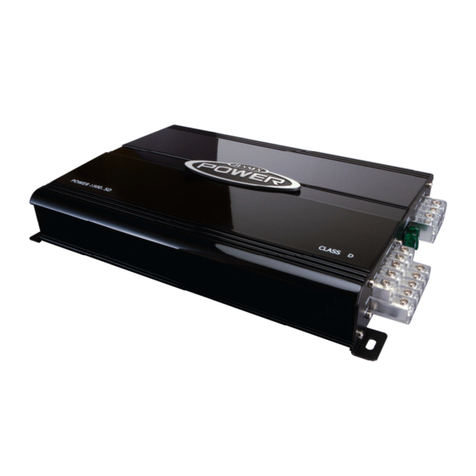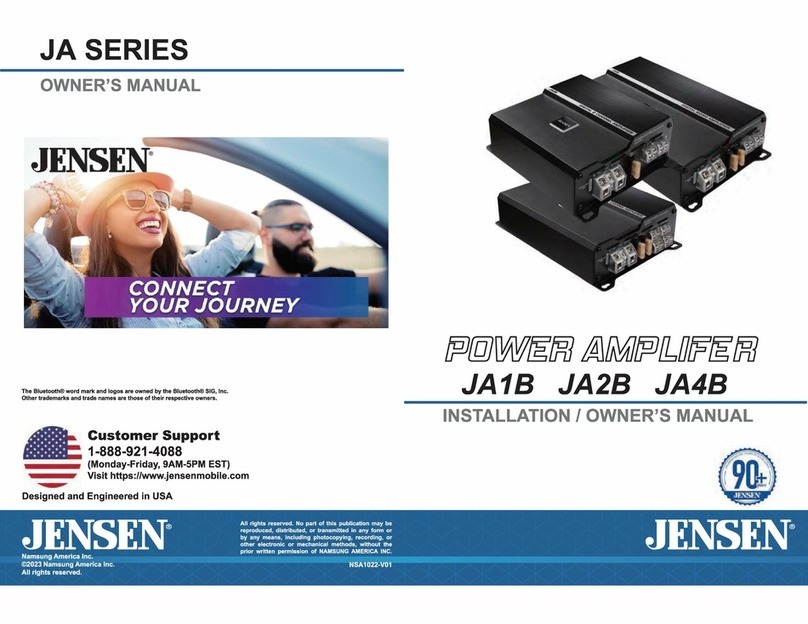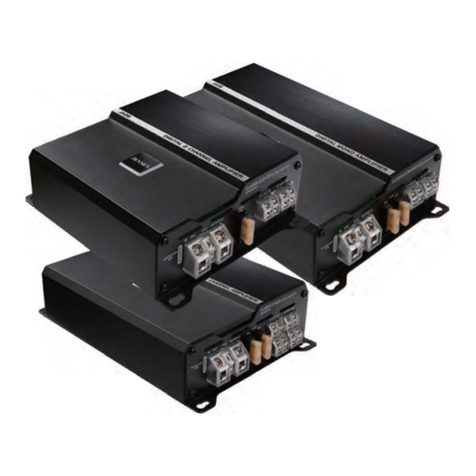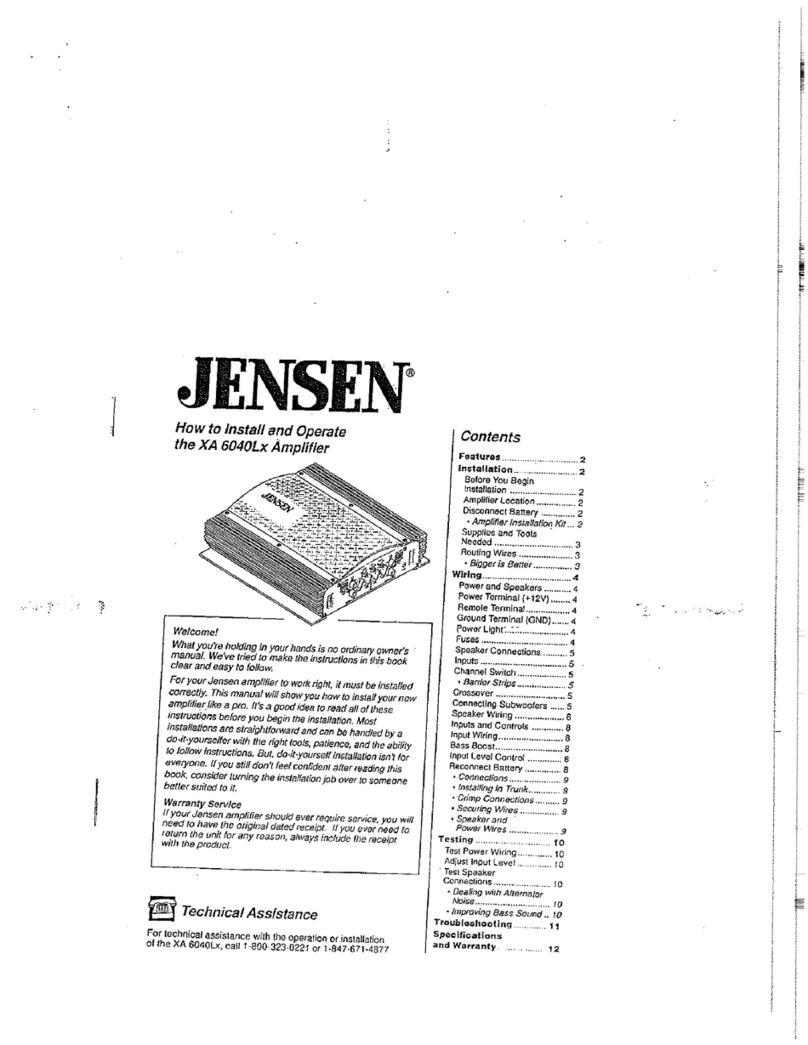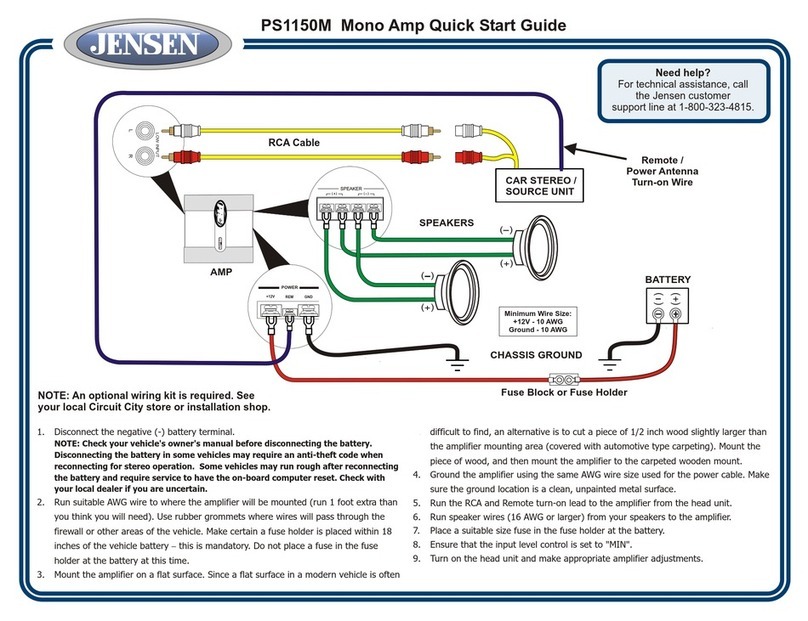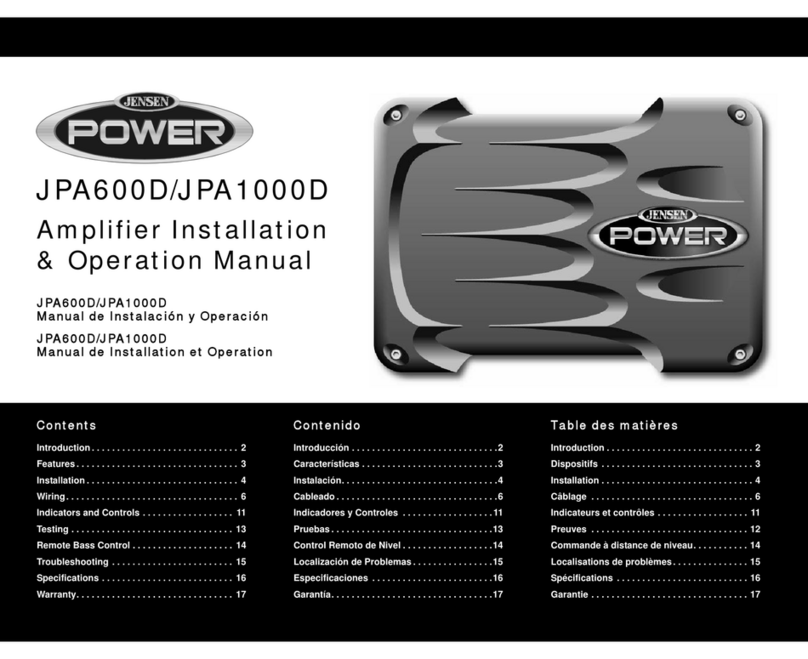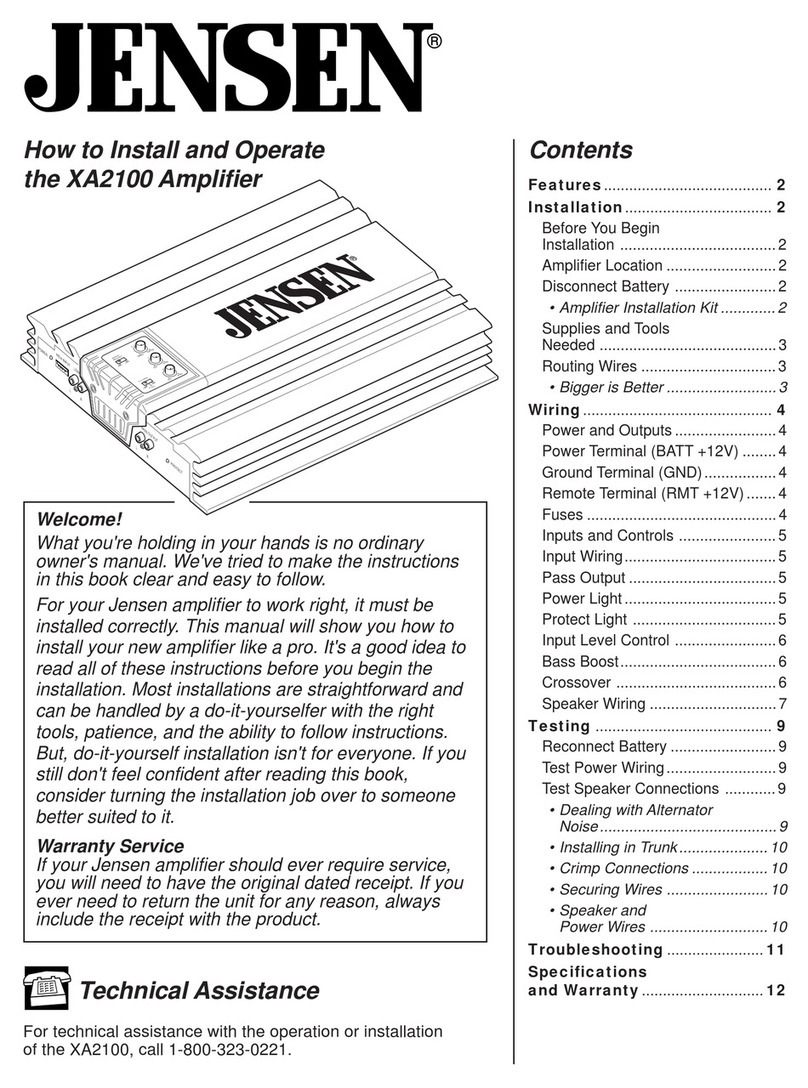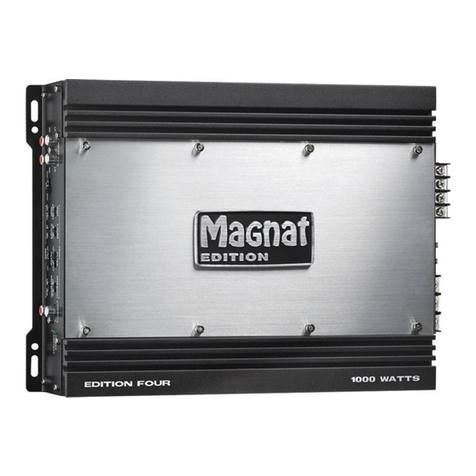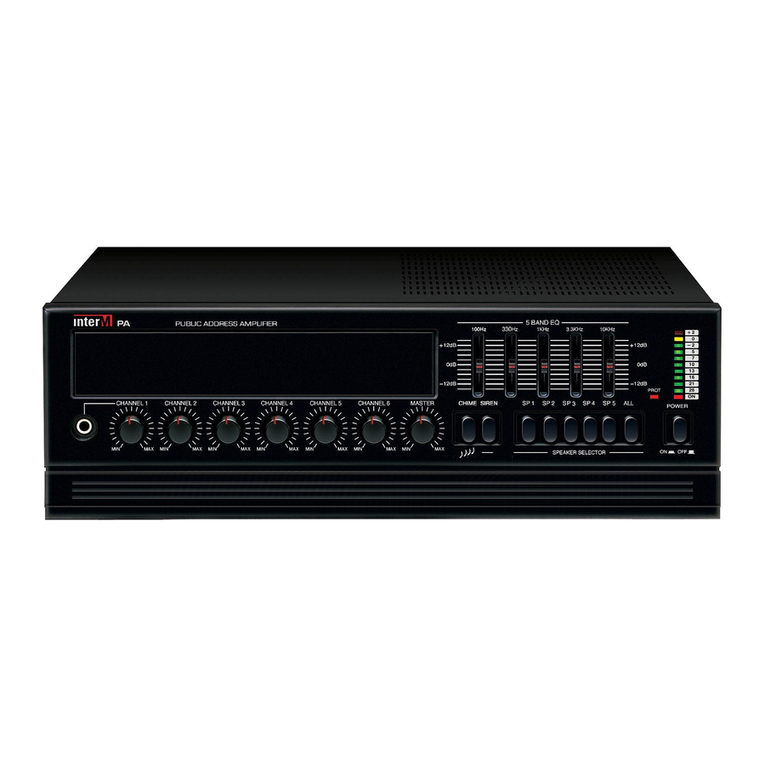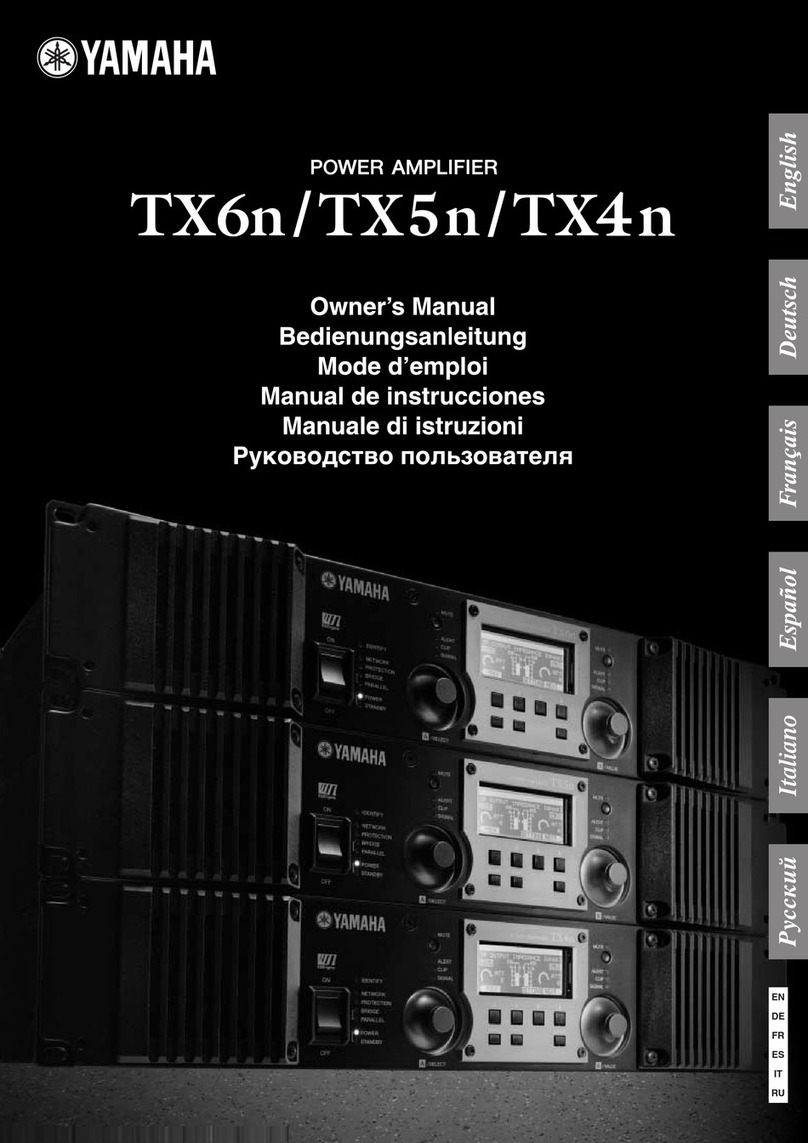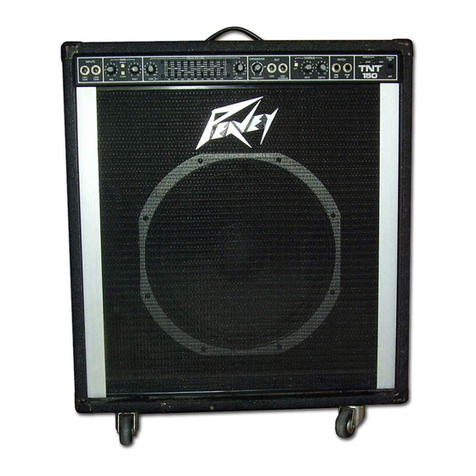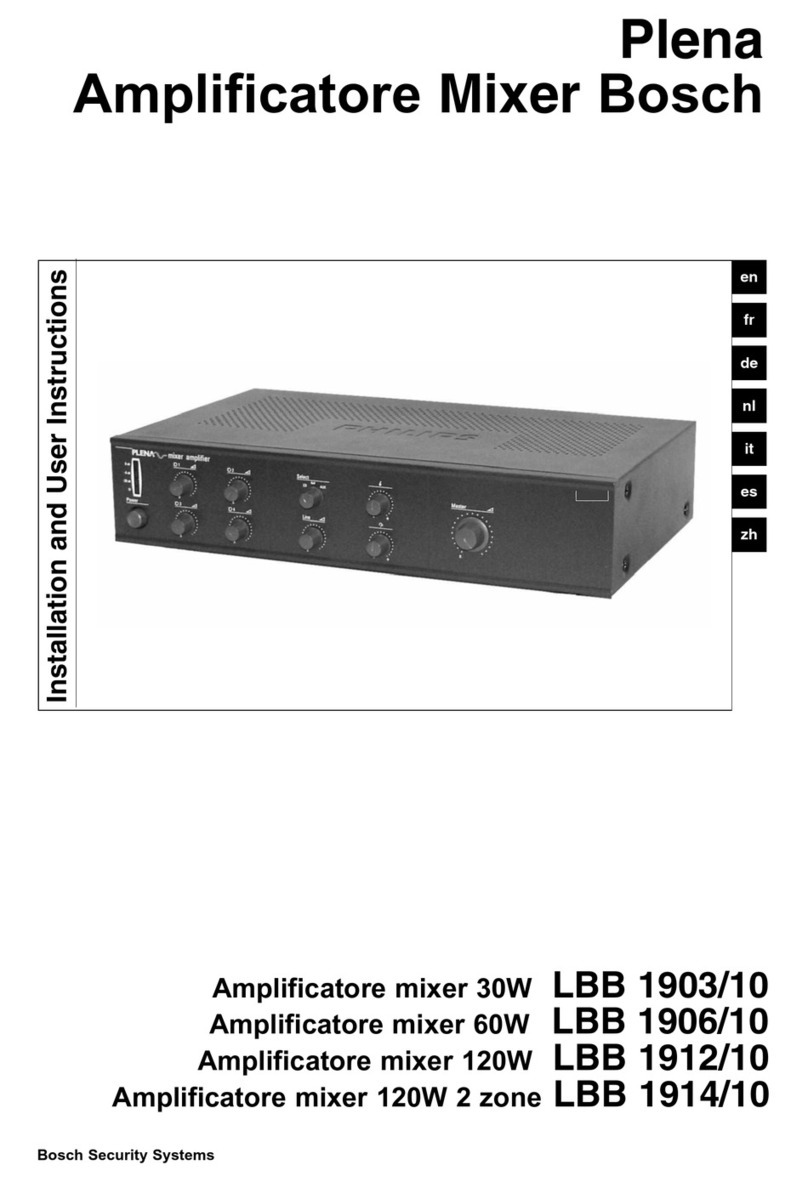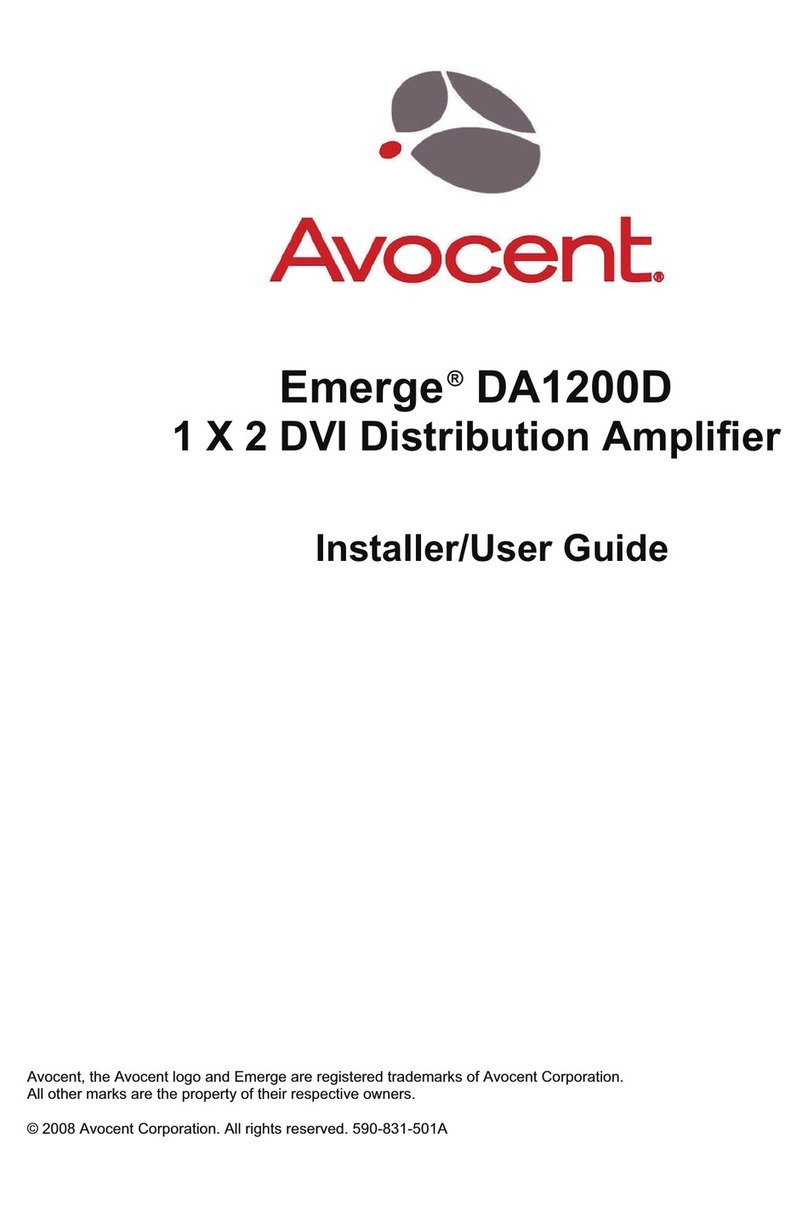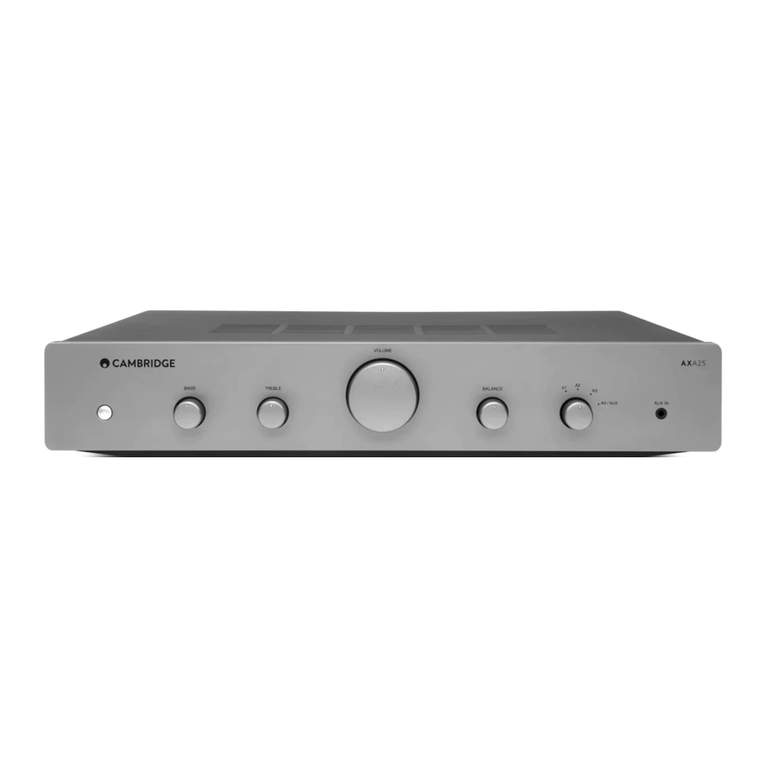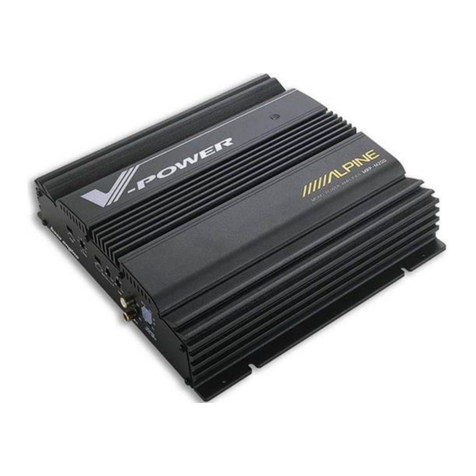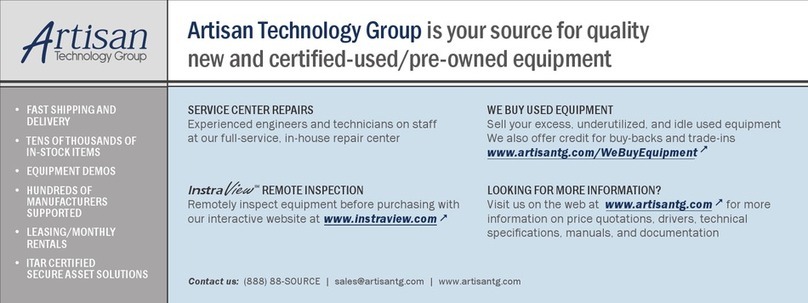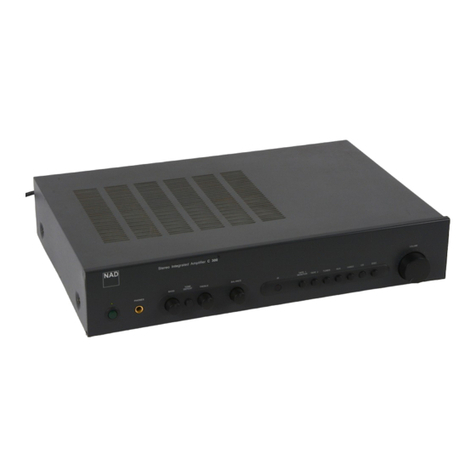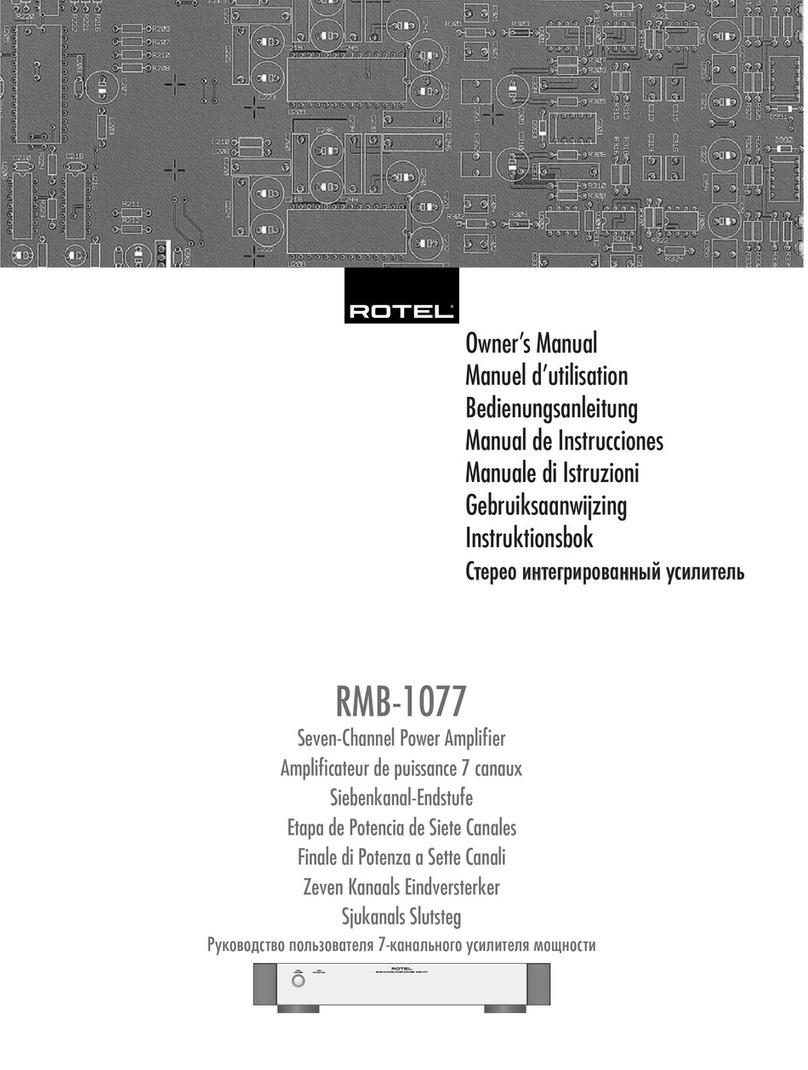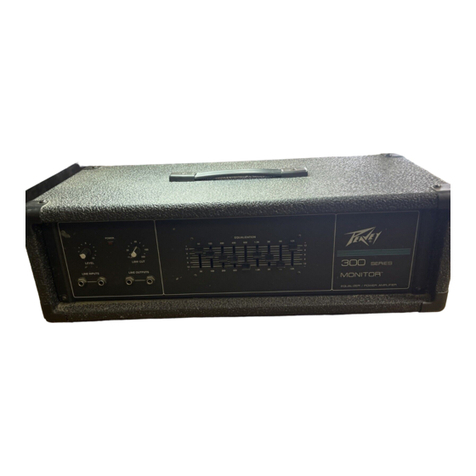POWER
1500.50
5-Channel
Amplifier
Indicators
and
Controls
PowerIndicator (POWER)
The
POWER
indicatorprovides a visual indication
that
the
amplifier
is
turned on.
Protect Indicator (PROTECT)
The
PROTECT
indicatorprovides a visual indication
that
a problem exists and
the
protection circuitry
has
protected
the
amplifier
by
shutting
it
down.Turn
the
system
off
and correct
the
problem before
turning
the
system
on
again.
• Thermal Protection: The amplifier
will
shut
down
if
its temperatureexceeds
a safe operating level. The amplifierwill remain
off
until
it
cools
to
a safe
operating temperature. Exercise care,
as
the
exterior
of
the
amplifier may
get
uncomfortably
hot
to
the
touch before shutting down.
• Overload and ShortCircuit Protection:The amplifierwill shut
down
if
ashort
circuitcondition
Input Level Control (LEVEL)
The
input
LEVEL
control matches
the
output
of
your
radio
to
the
input
of
the
amplifier. After
the
installation
is
complete, makesure
the
input
level control on
the
amplifier
is
turned
down
all
the
way
(counter-clockwise
or
all
the
way
to
the
left). Play atape
or
CD
(make sure
bass
and
treble
settings
or
Bass
EQ
are
flat) and
turn
the
volume
up
slowly
until
you
just
start
to
heardistortion. Back
the
volume
down
just
a bit. On
the
amplifier, slowly
turn
up
the
input
level
control (clockwise
or
to
the
right)
until
you
just
start
to
hear distortion,then
back
it
down
a bit.
Now
your
radio and amplifier levels are matched.
BassEQ
The
Bass
EQ
is
continuouslyadjustable
from
0
to+
12dB@ 45Hz. Adjusting
the
Bass
Boost level allows differentsubwoofer/enclosure combinations
to
be
equalized.
Use
thiscontrol
to
increase
the
level
of
low
bass
available
from
your
subwoofer/enclosurecombination. Ported and Band
Pass
enclosures should
be limited
to
about
+6dB
to
+9dB
of
boost. Sealed enclosures should be able
to
accept
the
full+
12dB
of
boost,
if
necessary. The
full+
12dB
of
boostshould
be reserved
for
special applications since
improper
use
of
the
Bass
Boost
could damage
your
subwoofers
at
high volumes.
8
SUBSONIC
The
SUB
SONIC
filter adjusts
the
high
pass
filter
for
the
SubwooferChannel.
This filterallows you
to
fine
tune
the
amount
of
extreme
low
bass
sent
to
your
subwoofer. For large sealed
box
subwoofers you maywish
to
set this
at
the
minimum
of
16Hz. Forsmallersubwoofers (single 8"
or
10"), setting
the
filter
to
about
30Hz will protect
the
speaker
from
excessive excursion and distortion.
For ported boxes,
the
woofer's excursion increases dramatically
at
about
1/3
octave below
the
tuning
frequency.
To
protect
the
subwoofer
from
damage,
the
SUB
SONIC
filtershould be set slightly below
the
tuning
frequency
ofthe
box.
Forexample,
if
your
box
is
tuned
to
40Hz,then
the
SUB
SONIC
filtershould be
set
to
approximately32Hz.
Low
Pass Filter (LPF)
The Low
Pass
Filter
for
ChannelS controls adjust
the
crossover point.Typical
crossover
is
between 60Hz and 80Hz
for
ported and sealed enclosures.
Bandpass boxes will typically use a highercrossover setting between 125Hz
and 150Hz. Since musical tastes vary, you should play music
that
you
would
normallylisten
to
in
your
vehicle,
with
the
above settings
as
a starting point.
If
necessary, set
the
crossover
by
ear.
High Pass Filter (HPF)
The high
pass
filterwill
limit
the
low
frequencies being transmitted
to
your
speakers. This can be useful in
number
of
situations. For example,
if
you
selected
the
high
pass
filterand set
the
crossover
to
40Hz, then you
would
have an infra-sonic (sub -sonic) filter at40Hz, which
would
be useful
with
certain enclosure/subwoofercombinations
that
were tuned between 45Hz and
50Hz. Other uses
might
include limiting
the
low
frequencies
to
smaller
speakers
(6
1/2",6
X9", etc.)
by
adjusting
the
crossover
to
a higher setting
(80-1
OOHz).
Crossover (FULUHPF)
The Jensen Power series
of
amplifiers have built-in low-pass and high-pass
crossover filters
for
bi-amplifying
the
system. Adjust
the
crossover
to
accommodate
your
chosen installation method.Choose
FULL
when crossover
mode
is
not
active and
the
amplifier
is
in"
full range" mode. Select
HPF
(high
pass
filter) when
the
amplifierwill be driving full-range
or
separate speakers,
and you
want
to
limit
the
"bass"being transferred
to
these speakers.
LPF
can
be adjusted
for
channel
5.

